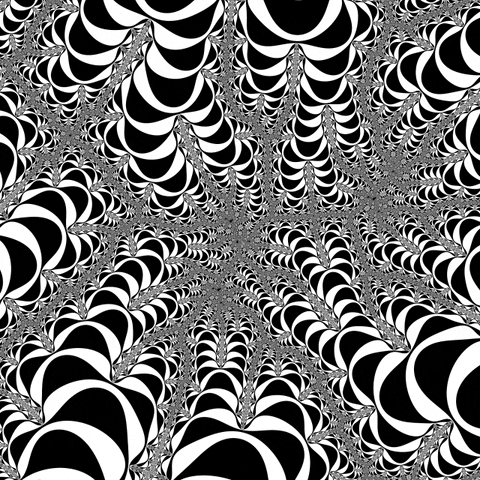Design for culture
- MATERIAL DESIGN
- WEAVING
- AFRICAN UI/UX
- INTERACTION
The kiondo basket, one of East Africa’s most significant cultural artifacts, is more than a practical container; it embodies the intersection of design, symbolism, and cosmology in African thought.
Woven meticulously by the Kikuyu and Kamba communities in Kenya, the kiondo is a living representation of life, organization, and architectural logic. Its geometric patterns, interwoven structure, and functional design mirror broader artistic traditions, offering unique insights into spatial organization and symbolic representation.
Origins and Traditional Use
 The Kiondo basket is indigenous to the Kamba, Kikuyu, and Taita communities of Kenya. The Kiondo basket’s purpose varies from region to region but is typically utilitarian in nature.
The Kiondo basket is indigenous to the Kamba, Kikuyu, and Taita communities of Kenya. The Kiondo basket’s purpose varies from region to region but is typically utilitarian in nature.
For Agikuyu people, the origin and symbolism of the Kiondo have deep and powerful meanings. The spiral construction of the traditional Kiondo baskets is an ancient pattern that, for the Agikuyu people, represented the joining of the male and the female to create the self. The traditional art of Kiondo weaving was a skillful craft, passed down from mother to daughter for generations.
In the Makueni region of Kenya, the tradition of weaving baskets started in the early 1930s. The women wove baskets for shopping, carrying goods in the markets, storing food, spices, and water, and giving as gifts at weddings. However, the main use for baskets was during the harvesting season to carry fruits and vegetables. Different patterns decorate the baskets to showcase the weaver’s skill, as well as for aesthetic purposes.
The history of the kiondo extends beyond its immediate function. According to oral traditions, the weaving of kiondos was a form of knowledge transfer, where older women taught younger generations intricate techniques alongside moral lessons, emphasizing patience, precision, and communal values. Over time, the significance of the kiondo evolved, integrating new materials and adapting to market demands while retaining its symbolic core.
The Kiondo as a Cosmological Model
In Kikuyu tradition, the kiondo is not merely a tool for carrying goods but a reflection of order and balance in the universe. The patterns in its weave are deliberate, signifying interconnectedness, continuity, and harmony—principles that can inform UX design. Just as the kiondo’s structure is designed to be both strong and flexible, digital experiences can be built to accommodate fluidity while maintaining coherence. The spiral weaving technique symbolizes cycles of knowledge and the interconnectedness of human experience, which UX designers can translate into intuitive, user-centered experiences.
 The Mythological Origins of the Kiondo
The Mythological Origins of the Kiondo
The Kikuyu mythological origin is represented in the form of the kiondo. The navel of the basket symbolizes the ‘Spirit of Place’ or ‘Genius Loci,’ with Mukurwe wa Nyagathanga serving as the origin or locus at the beginning of time. The warp (Mirugamo) of the kiondo represents the original nine full clans of the Kikuyu, which remain constant. The ‘Spirit of the Age’ (Zeitgeist) or ‘Age-groups’ (Rika in Kikuyu) are depicted through the stages of the kiondo. Each stage (itina) represents an age-group that transitions to another following a generational change (Ituika) or strip. These generations are traditionally masculine and are assigned male names such as Maina and Irungu.
Interestingly, this dynamic represents a reversal of male and female principles, a concept also seen in the Chinese Yin-Yang philosophy. For an individual, the strip in the kiondo signifies initiation into the next stage of life, such as circumcision or marriage. A thought-provoking question arises: why have modern Kikuyu women largely adopted kiondos without stripes? This shift may reflect evolving cultural identities and aesthetic preferences, hinting at a broader transformation in gender roles and generational symbolism within contemporary Kikuyu society.
The Kiondo as a Powerful Symbol and a Forgotten Language
The kiondo is one of the most powerful symbols among the Kikuyu. It has been woven in an archaic and incomprehensible language that requires careful and systematic decoding today. Each strand in its spiral form encodes ancestral knowledge, cosmology, and social structure, making it not just a container but a living manuscript of Kikuyu philosophy. Understanding its embedded meanings provides a unique opportunity to rethink the way we design technologies and user experiences.
The Language of the Spiral in Kiondo Design
The kiondo is written in the language of the spiral. Its basic structure consists of a weave composed of two fundamental elements: the warp (mirugamo—those who stand erect) and the weft (rurigi—string). As a mandala representing the Self, the warp symbolizes the male principle, while the weft represents the female principle. Beginning from the navel (mukonyo), the kiondo is constructed as a spiral that expands into a basket, its size determined by its intended use. The sides are often adorned with multiple bands of varying colors, separated by thin stripes, each carrying symbolic significance.
The Kiondo Basket and Gikuyu Cosmology in Design
The kiondo basket, one of East Africa’s most significant cultural artifacts, exemplifies the intersection of design, symbolism, and cosmology in African thought. Among the Kikuyu, the kiondo is more than a woven container—it embodies a powerful cosmological model representing life, organization, and architecture. Its intricate geometric motifs and construction methods parallel broader architectural and artistic traditions, offering insights into spatial organization and symbolic representation.
Masculine and Feminine Design Principles in Kiondo
Every society has a mental map or worldview of how man (male and female) relates to the cosmos, and the Gikuyu are no different. The ideal Gikuyu map supports, at all levels, the three basic needs of man, represented metaphorically by the three-legged stool (masculine) or the fireplace with three stones supporting the “pot of wholeness” (feminine). The three stones must uphold all levels of “Adequatio” (food, health, and shelter). These principles are embedded in Gikuyu social organization:
- Man and Woman (Masculine and Feminine)
- House (Nyumba – Feminine): The woman’s hut is the center of the nuclear family. If the man is polygamous, each person in the homestead identifies with a mother’s Nyumba.
- Home (Mucii – Masculine): The entire homestead consists of several Nyumbas, the man’s hut (thingira), and other elements like a cattle kraal and granaries, all enclosed within a fence. The whole is identified with the man.
- Sub-clan (Mbari – Masculine): Several homesteads of related cousins are identified as belonging to a Mbari, which is named after men.
- Clan (Muhiriga – Feminine): The most important classification in terms of identity. Clans were associated with distinct characteristics, common rituals (marriage, circumcision), and shared totems. Each clan name traces back to one of the original 9+1 daughters of Gikuyu and Mumbi, the tribe’s progenitors.
- Tribe (Ririri – Feminine): The tribe was referred to as the “House of Mumbi,” indicating a feminine identity despite men holding leadership roles.
- Nation (Ruriri – Evolving Identity): The idea of a nation is still forming. While tribes have a stronger mental hold, a modern sense of national identity is emerging.
- One World (Thi Yothe): The forging of all nations into a shared global consciousness, growing stronger as interconnections increase.
These elements of Gikuyu organization inform design thinking by emphasizing relational structures, interconnectedness, and a balance between masculine and feminine principles. Applying such insights in UX design can lead to more culturally attuned and meaningful digital experiences for African users.
UX Principles Inspired by the Kiondo
African UX Design and Indigenous Knowledge
Traditional African problem-solving methods involve communal knowledge-sharing and intuitive reasoning. In UX, this suggests that interfaces should be designed with localized cognitive patterns in mind. Consider how African languages influence perception—many use relational rather than absolute directions (e.g., “toward the mountain” instead of “turn right”). A navigation app tailored for African users could integrate this thinking, offering directions that align with how locals naturally conceptualize space.

Layered and Non-Linear Navigation
The kiondo's woven patterns interlace seamlessly, demonstrating a non-linear yet organized form. This offers a framework for digital interfaces that move beyond rigid hierarchies to more organic, interconnected structures. African digital spaces can incorporate layered navigation systems that allow users to explore information dynamically rather than through predetermined paths. This mirrors the way oral traditions and indigenous knowledge systems function—fluid, contextual, and adaptive.

Communal and Relational Design
African cultures emphasize community and relational thinking. Similarly, UX design should foster collaboration, shared knowledge, and collective decision-making. Consider social commerce platforms, where user experiences are driven by community interactions rather than individual transactions. By embedding features that encourage peer recommendations, group participation, and shared storytelling, digital platforms can better align with African social behaviors.

Cultural Symbolism and Meaningful Aesthetics
Much like the kiondo conveys cultural narratives through its motifs, digital interfaces should be more than functional—they should embody meaning. African digital products should integrate indigenous patterns, color schemes, and symbolic representations that reinforce identity and cultural pride. For example, UI elements can reflect traditional African geometry, or transitions can mimic the rhythmic patterns found in weaving techniques.

Spatial Logic and Cognitive Mapping
African languages and worldviews often conceptualize space differently from Western cartographic norms. Many African languages use relational spatial references, such as "toward the mountain" rather than "turn right." A UX model inspired by the kiondo should account for these cognitive patterns by designing navigation and wayfinding systems that align with localized spatial understanding. Applications such as GPS systems tailored for African users could benefit from these insights.
Defining an African Digital Aesthetic
Integrating African symbolism, mathematical principles, and design traditions into UX presents an opportunity to define a uniquely African digital aesthetic. Rather than relying solely on Western frameworks, African designers can create interfaces that resonate with local cognitive models, community-oriented decision-making, and indigenous aesthetics. By drawing from cultural artifacts like the kiondo, we can design digital experiences that are not only innovative but also deeply rooted in cultural identity.
The Future of African UX
By reimagining UX through the lens of African material culture, we open new pathways for digital innovation. The kiondo, with its intricate design logic, offers valuable lessons in flexibility, interconnectedness, and meaning. As Africa continues to expand its digital footprint, embracing these principles can ensure that technology remains culturally relevant and accessible to local users. In doing so, we can build digital ecosystems that honor African heritage while shaping its technological future.

